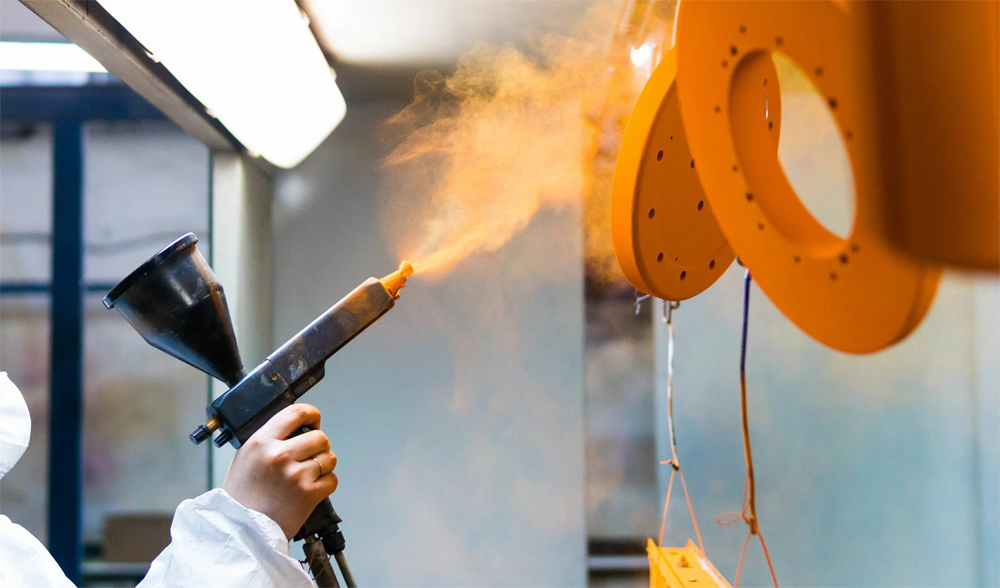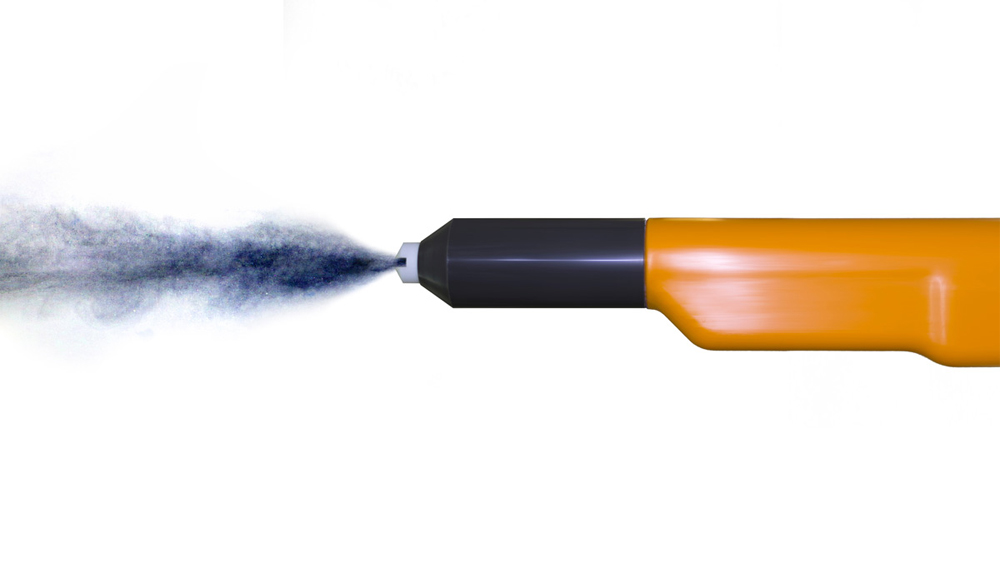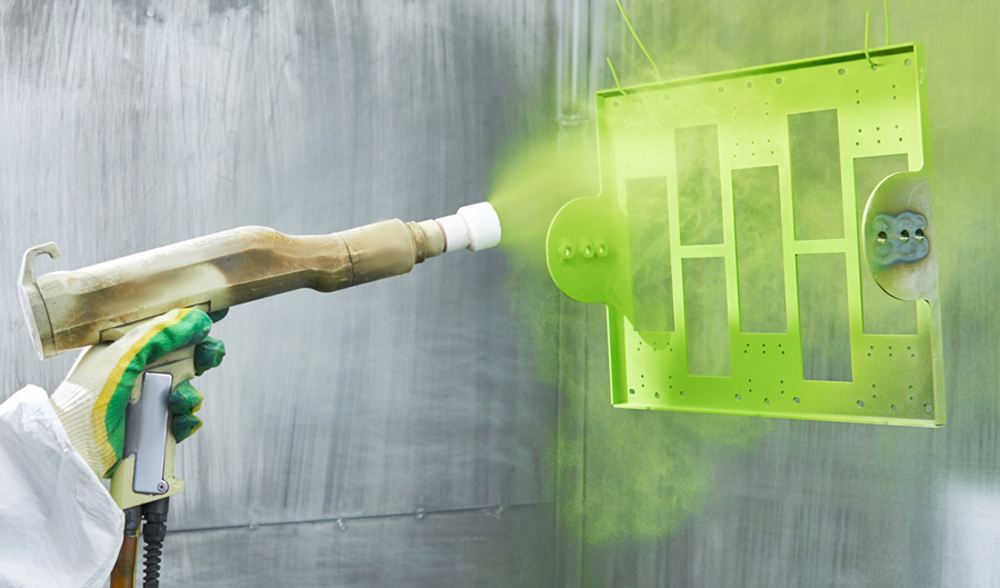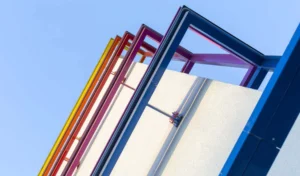In the current market of powder coating equipment, top brand manufacturers now offer manual powder spray guns with advanced technology that allows independent adjustment of current (microamps – µA) and voltage (KV). This level of control provides enhanced precision for powder coating machines. If you are using an older manual coating unit, you may not have this capability and can only control the electrostatic power by adjusting the KV setting.
It is evident from practical experience that adjusting microamps is the optimal method for controlling the electrostatic power emitted by the spray gun. To comprehend the reasons behind this, it is essential to delve deeper into the concept of electrostatic charging.

In the context of electrostatic powder coating guns, voltage and current exhibit an inverse relationship when there is a restricted energy supply. Voltage represents the electrical potential to perform work, while current measures the flow of electricity or the work being accomplished. As the potential is utilized, it transforms into current, resulting in a decrease in available potential or energy. Both voltage and current play important roles as settings and indicators for electrostatic guns.
In powder coating industry, the electrostatic power of a gun is commonly referred to as voltage or “KV” (kilovolts). The gun’s voltage is a measurement that signifies the amount of electrical charge it can generate. When discussing a gun’s power, we often use the term in terms of kilovolts, such as 110 KV. This means that the gun is capable of producing 110,000 volts, as one kilovolt is equivalent to 1,000 volts.
Conversely, the term “current” is represented by “µA,” which stands for microamperes. It quantifies the amount of electrical current flowing from the gun’s electrode. A microampere is equivalent to 0.000001 ampere, or one-millionth of an ampere, which denotes a very small current value. In the case of a powder coating gun, this current passes through the gun’s electrode and is discharged into the air, eventually reaching the powder particles as they exit the gun. This process effectively “charges” the powder and enables its transfer onto the surface being coated.
To achieve optimal transfer efficiency, it is recommended to set the electrostatic parameters of the powder coating gun to the maximum allowable values for both KV and current. For instance, a setting of 110 KV and 110 µA would provide a good starting point for fast and efficient coating, as long as the resulting finish meets the desired standards. However, if an unsatisfactory finish is obtained, characterized by issues such as poor penetration, orange peel texture, or uneven edges, adjusting the electrostatic power settings may offer a potential solution.

It is worth noting that other factors such as grounding, gun-target distance, nozzle selection, and spray technique can also contribute to an undesirable finish. However, in the context of our discussion on electrostatics, let’s focus on that aspect. In the case of the gun settings (110 KV – 110 µA), it appears that we have an excess of power, resulting in a “reject” or unsatisfactory coating. To address this issue, the recommended solution would be to lower the current rather than adjusting the voltage.
To maximize transfer efficiency, it is advisable to maintain the voltage at its maximum level, enabling the powder coating gun to operate at its peak efficiency whenever feasible. By regulating the current, we can control the amount of charging power drawn from the gun. By limiting the electrostatic charge, the coater has the flexibility to bring the gun closer to the surface for improved penetration or allocate more time to coat challenging areas. This approach helps prevent issues like orange peel or uneven coating edges.
Imagine you are driving a high-performance sports car with a powerful engine that allows you to reach high speeds on straight and gently curving roads. In these situations, you can utilize the full power of the engine. However, when you approach a dangerous curve, known as “Dead Man’s Curve,” it becomes unsafe to maintain the same level of power. Adjustments need to be made. If your car has the capability to limit and control the power output, allowing you to safely navigate the curve, and then automatically restore full power and speed afterward, it would be similar to adjusting the current level on your powder coating gun. This concept is comparable to current limiting.

In a similar vein, opting to adjust the KV instead of µA would be akin to swapping the powerful engine of your sports car for a humble lawn mower engine. While you would be able to navigate Dead Man’s Curve safely, the experience of driving along those straight and mildly curving roads, which are designed for high performance, would become slow and mundane. It would lack the excitement and thrill that comes with unleashing the full potential of your vehicle.
It is important to understand that a high KV powder coating gun setting provides the maximum potential for powder charging, and there may be situations where adjusting the KV becomes necessary. However, it should only be considered as a last resort when undesirable results cannot be effectively controlled by adjusting or lowering the current setting on the gun.
It has been found that limiting the current setting on the gun is the most effective method for controlling the electrostatic charge generated by the gun. This approach ensures high transfer efficiency and helps overcome issues like poor penetration, commonly known as the “Faraday Cage Effect.” When coating complex or challenging parts, it is recommended to set the gun’s KV setting to the maximum while limiting the current setting to around 20 µA. It is important to note that for certain applications involving difficult powder materials or intricate substrate geometries, even lower current settings (below 10 µA) may be necessary.
In summary, voltage and current are both crucial elements in the electrostatic powder coating process. Having a powder coating gun that allows monitoring and adjustment of both settings provides a significant advantage, offering users enhanced flexibility and control over the coating process.





